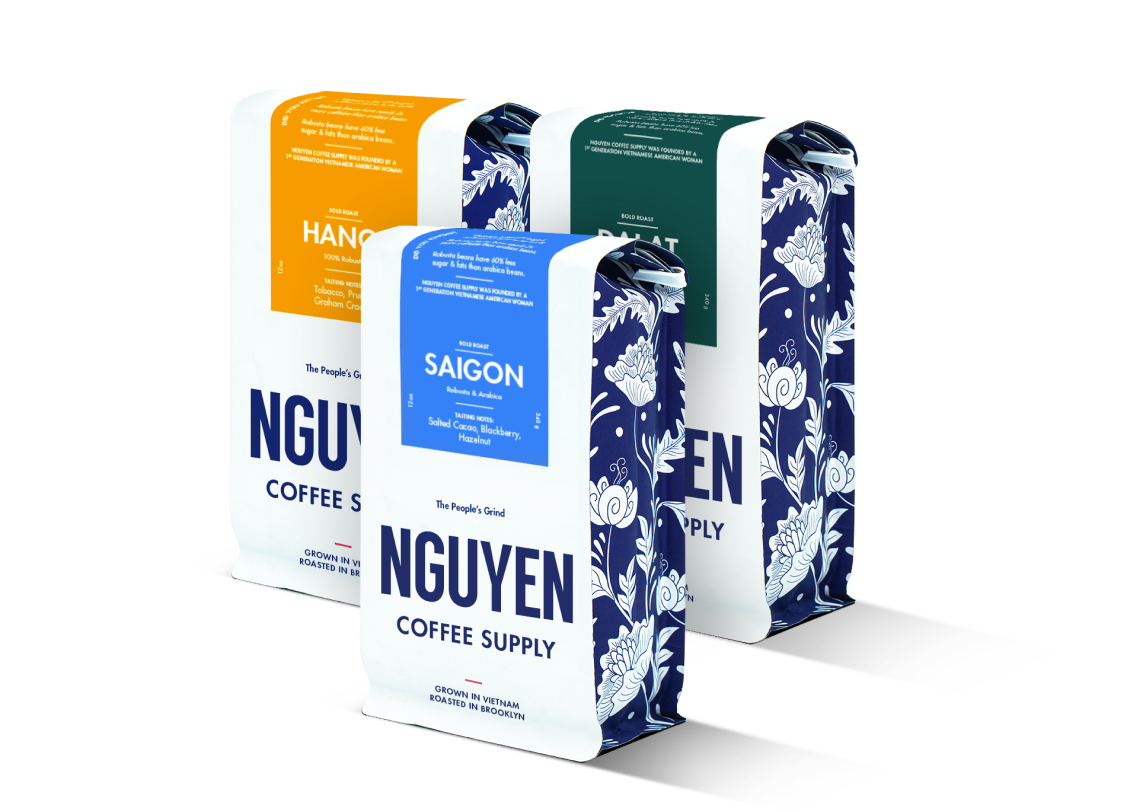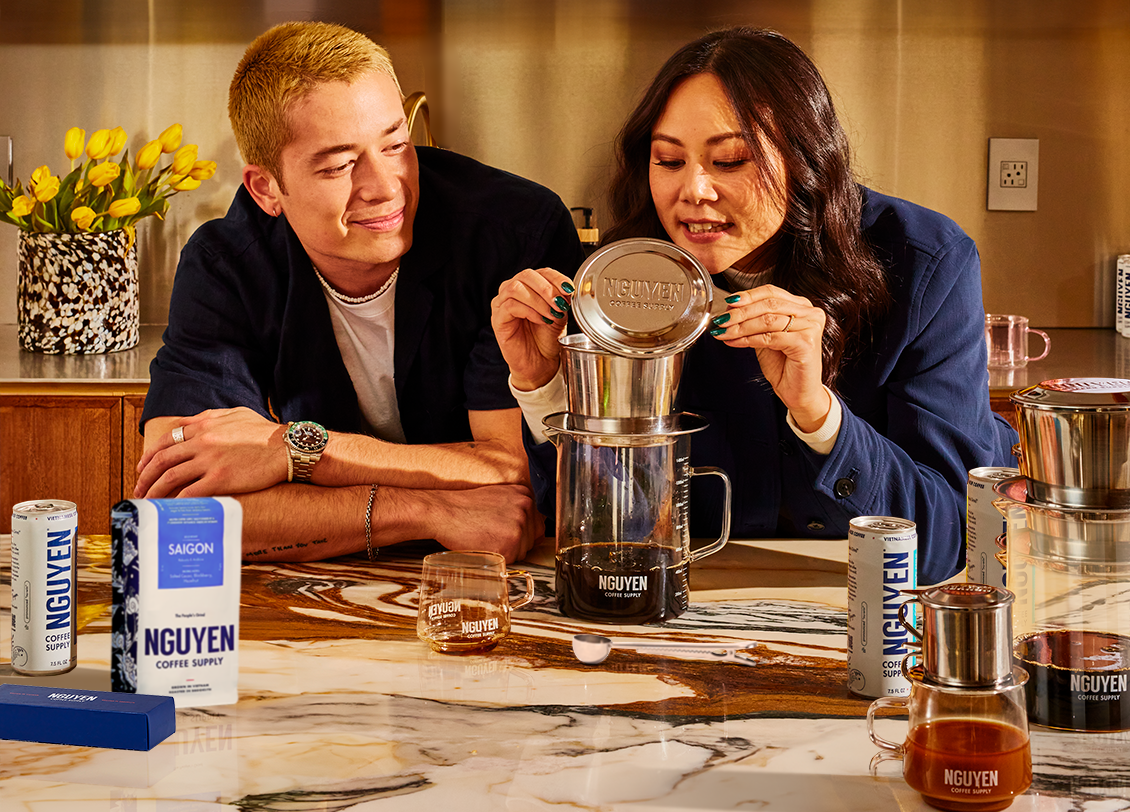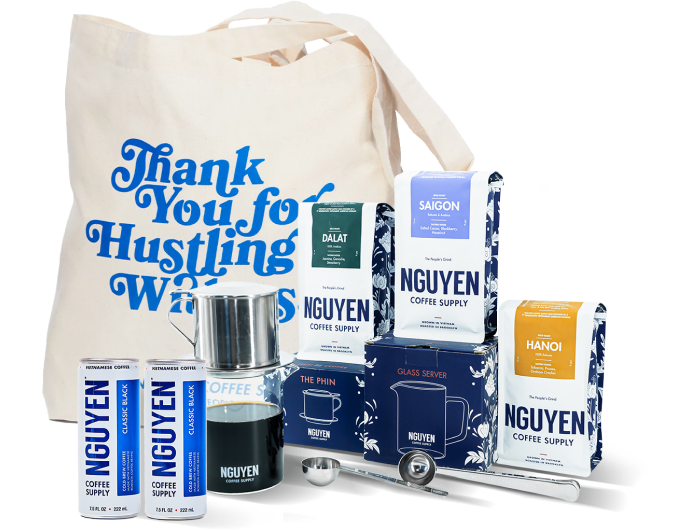

- FEATURED ON IMBIBE

Create for yourself or as a gift for your loved ones
Subscribe nowMe and mom just enjoyed the Nguyen phin drip experience. Wow. Proud of your work. We without hesitation enjoy the Vietnamese coffee and recommend your products. Thank-you to the Nguyen staff and tradition. From Canada eh!
For many people, coffee is an everyday essential. Some people, however, have to limit their coffee intake for a variety of reasons such as caffeine or acid reflux. We'll break down why Vietnamese coffee is the perfect solution for those who want to enjoy low acid and non-acidic coffee.
Coffee varies from place to place and everything from its taste to its caffeine content can vary. All coffee naturally contains acidic compounds, but a variety of factors can determine whether a cup of coffee will be very acidic or not at all. For starters, the roast level of the coffee can determine its acidity; the darker the roast, the less acidic the coffee will be generally.
Additionally, factors such as brew method and grind size can affect the acidity of the coffee. Hot brewed coffee that employs a short extraction time increases the likelihood of more acidity in the final cup of coffee. Heat reacts chemically with the compounds in coffee to release more acidity, which is reflected in the taste and texture of the coffee. Grind size also plays a role in acidity of brewed coffee– the finer the grind size, the higher likelihood of acidity due to increased surface area on the coffee grounds and more room for extraction during the brewing process.
These factors are only a part of the question in determining whether coffee is acidic. Another key consideration for determining coffee acidity is the bean type, which has its own natural variances in terms of acidity.
Vietnamese coffee is not acidic because it is primarily robusta coffee, which is a bolder and stronger species of coffee that is known for having twice the caffeine of arabica coffee. Robusta coffee has 60% less sugars and fats than arabica as well, which makes it ideal for those who are looking for non-acidic coffee. Robusta coffee has a naturally less acidic profile and boasts more antioxidants.
Vietnamese coffee provides a clean boost of energy without fear of acid reflux or any sour taste when brewed properly. Vietnamese coffee has nutty, chocolatey, and scotch flavor notes compared to bright and fruity arabica coffee. It blends well with sweeter ingredients such as milk for cold brews and iced coffee. Vietnamese coffee is a great option for those who have to avoid acid in their diet because it leaves no sour aftertaste and has a smooth flavor.
Besides being naturally low acid, robusta coffee also provides a deep and bold flavor to a variety of different brew methods. When combined with brew methods that are known for being less acidic, you are guaranteed a coffee that has no acid.
One of the best coffee styles for smooth, bold flavor with no acid is cold brew.
Cold brew is coffee that is extracted by combining coarsely ground coffee with water (room temperature or cold) over the course of 12-18 hours.
Cold brew coffee is less acidic than hot brewed coffee because hot water extracts caffeine and molecules from coffee grounds quickly. Cold brew allows flavor from coffee to release over time and on a chemical level, less acidic compounds are released as there is no reaction with heat involved.
To make cold brew with Vietnamese coffee, you will need:
Recipe notes:
Directions:
As with any new coffee experience, but especially with our specialty Vietnamese coffee beans, we recommend drinking it black to appreciate the natural flavor of the coffee at first or with a bit of your favorite milk. Ultimately, you are the decision maker on how you like your coffee so you can go from there and enjoy it as you like!
For folks who suffer from acid reflux, drinking cold brew made from Vietnamese coffee beans is the perfect answer to how to drink non-acidic coffee.
Learn how to use robusta coffee beans in delicious drink recipes here.